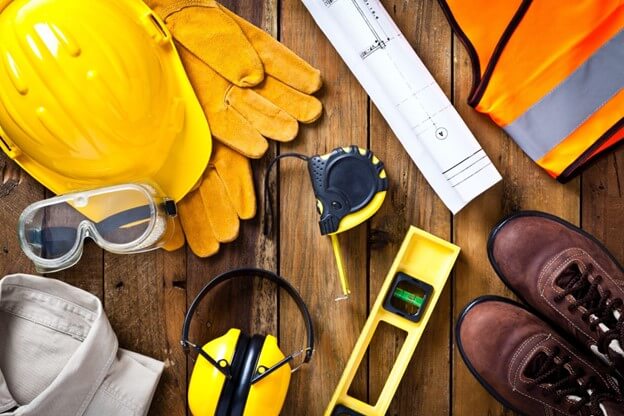
Whether you’re a professional manufacturer or a DIY enthusiast exploring new creative avenues, acrylic plastic is an undeniably valuable material. Its versatility, clarity, and ease of use make it suitable for a wide range of projects, from sleek signage to intricate artwork. In this guide, we’ll delve into essential acrylic plastic safety tips to equip you with the knowledge and precautions necessary to work with this material.
Can Working with Acrylic Be Harmful?
Acrylic plastic, like many materials, has the potential to be harmful if not handled appropriately and with care. Though non-toxic at room temperature, acrylic transitions from a solid to a gaseous state when it reaches its melting point of 130-140°C. So, when engraving, cutting, or otherwise manipulating acrylic via lasers and other heat sources, it’s important to be cautious of the vapor, dust, and fumes that are emitted in the process. Here are some acrylic plastic safety tips to take into consideration in an effort to mitigate risk.
1. Wear Proper PPE
Personal protective equipment (PPE) is essential when working with acrylic. Wearing safety goggles protects your eyes from dust and flying debris, and slipping on gloves shields your hands from cuts and abrasions. Additionally, consider wearing a mask to prevent inhalation of fine acrylic particles and toxic gasses. A face shield covers a larger surface area and can be layered over both goggles and a mask to create a safe barrier.
2. Ensure Your Area is Well-Ventilated
Adequate ventilation is crucial when working with acrylic. Whether cutting, sanding, or heating the material, ensure that your workspace allows plenty of airflow to prevent the buildup of fumes and dust. Consider working outdoors or using a ventilation or fume-extraction system to maintain a healthy work environment. Make sure the doors and windows are never shut, even in the winter, and avoid using the air conditioner.
3. Carry & Handle with Care
Acrylic may be durable, but it can still be fragile. Handle sheets and pieces with care to avoid chipping, cracking, or breaking. When transporting acrylic, use proper supports and padding to prevent damage during transit.
4. Make Sure You’re Using the Right Tools
Using the correct tools can make a significant difference in safety and efficiency when working with acrylic. Opt for tools specifically designed for acrylic fabrication, such as acrylic scoring knives, circular saws with carbide-tipped blades, and slow-speed drill bits that cut holes without cracking or melting the material. Avoid using tools intended for other materials, as they may cause damage or produce inferior results.
5. Store & Maintain Properly
Proper storage and maintenance are essential for prolonging the lifespan of your acrylic materials. Store sheets vertically to prevent warping and distortion, and avoid exposing acrylic to extreme temperatures or direct sunlight for extended periods. Regularly clean acrylic surfaces with mild soap and water to remove dust, dirt, and debris.
6. Dispose of Waste Properly
Proper disposal of acrylic waste is essential for environmental safety. Dispose of scraps, offcuts, and unused materials in accordance with local regulations. Consider recycling acrylic waste whenever possible to reduce environmental impact.
7. Keep Your Work Area Clean and Clutter-Free
Maintaining a clean and clutter-free work area is an important factor of acrylic plastic safety. Clearing away debris, scraps, and unused tools helps to prevent tripping hazards and reduces the risk of accidents. Keeping surfaces clean and organized also promotes better visibility and control, allowing you to focus on your work and minimize the likelihood of mishaps.
8. Monitor Temperature During Heating
When heating acrylic for bending or shaping, it’s crucial to monitor the temperature carefully to avoid overheating. Excessive heat can cause the acrylic to soften too much, leading to deformation or bubbling. Use a thermometer to gauge the temperature and apply heat evenly to prevent localized overheating.
9. Avoid Excessive Pressure When Polishing
When polishing acrylic surfaces, apply gentle pressure to avoid causing scratches or distortion. Excessive pressure can lead to uneven polishing and damage to the material’s clarity. Instead, use light, circular motions with a soft cloth or polishing pad to achieve a smooth finish without compromising the integrity of the acrylic.
10. Be Mindful of Static Electricity
Acrylic is prone to static electricity buildup, which can attract dust and debris during handling and fabrication. To minimize static electricity, work in a low-humidity environment and use anti-static products or treatments on surfaces and tools. Additionally, periodically discharge static electricity by grounding yourself or using an ionizer to prevent interference with your work and maintain cleanliness.
Discover Your Acrylic Options with Acme Plastics
Ready to embark on your next acrylic project? Explore a wide range of acrylic options at Acme Plastics. Whether you’re looking for clear sheets for displays and signage or colored acrylic for creative projects, Acme has you covered. With high-quality materials and expert advice, Acme makes it easy to bring your ideas to life safely and effectively.
In conclusion, working with acrylic can be both rewarding and safe when the proper precautions are taken. By following these acrylic plastic safety tips, you can enjoy the benefits of this versatile material while minimizing risks to yourself and your surroundings. Remember, safety always comes first. Be sure to contact us today with any questions you may have!

